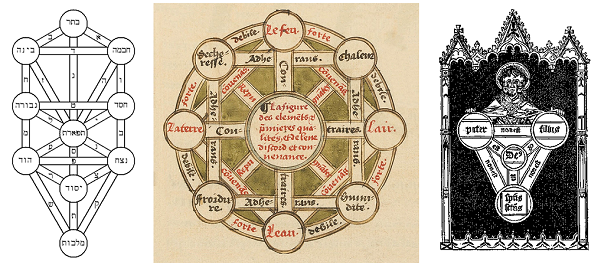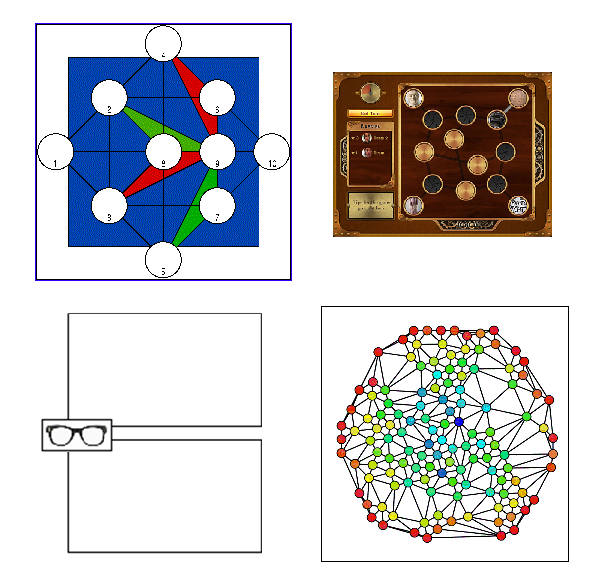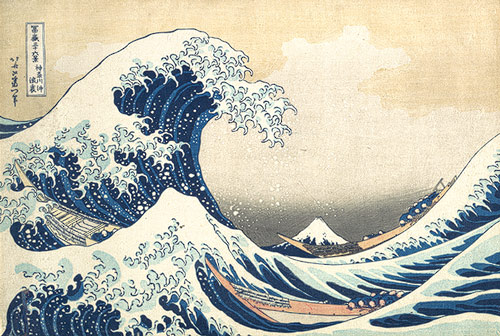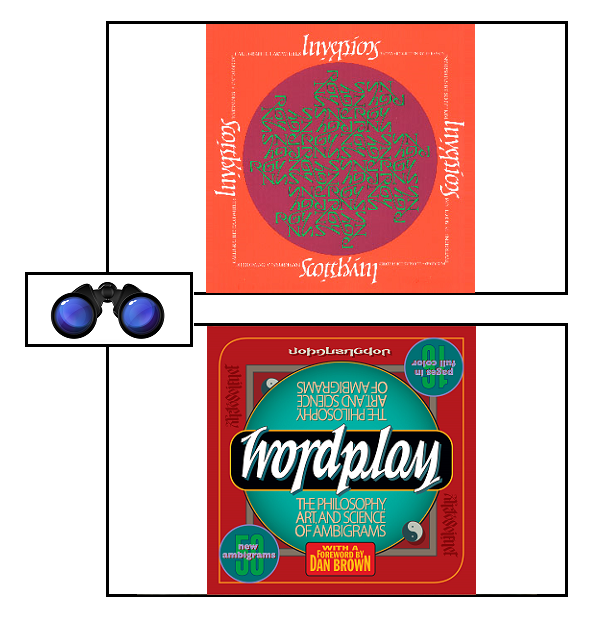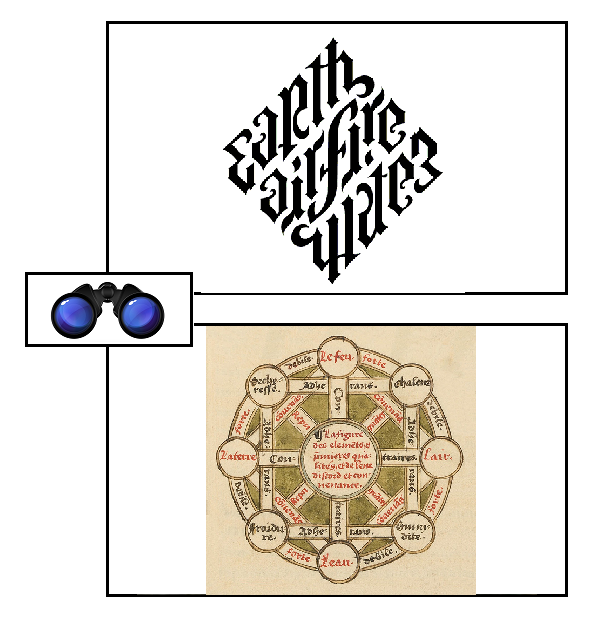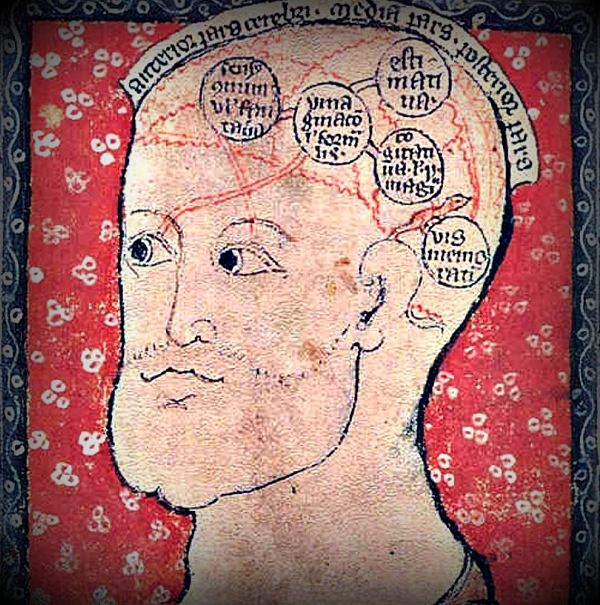Graph-types 1: sample graphs and boards
Tuesday, February 9th, 2016[ by Charles Cameron — background reading for the post which follows ]
.
This is a quick look at node and edge graphs and some of the boards used in HipBone, DoubleQuote, and Sembl Games — a refresher for those who already know, and a quick intro for those who may not…
Above, you’ll see two graphs — one very simple and one far more complex. What they have in common is points (known as nodes) and lines connecting them (known as edges). Graphs of this kind are instances of the basic pattern on which much of contemporary understanding of the world rests, as it mostly rested on linear thinking in previous centuries. They are everywhere.
**
In the next image, however, we see some medieval and renaissance instances of graphs in which concepts and their relations have been assigned to the nodes and their edges — these are also commonly found today, but the early versions here have a beauty all their own..
Left to right: the Sephirotic Tree of classical Jewish Kabbalah; Oronce Fine‘s diagram of the four elements; and a medieval respresentation of the Christian Trinity. It was the Reformation & Counter-Reformation that really put a stop to this kind of graphical thinking, as Ioan Couliano teaches us.
**
Finally, my HipBone Games and the Museum Game that Cath Styles designed for the National Museum of Australia use graphs as their boards, and the players assign concepts to the various nodes, establishing conceptual links between them:
Upper left, th4 standard WaterBird board for HipBone play; upper right, one of Cath’s boards for the Museum Game; lower left, the DoubleQuotes board, and lower right, a beautiful graph on which I hoped gto play a symphonic Bead Game.
**
That’s the essential background you need to proceed to the next post, Graph-types 2: towards a universal graphical mapping language, where I lay out my hopeful, hopeless scheme for a Grand Unified Map. Onwards.

